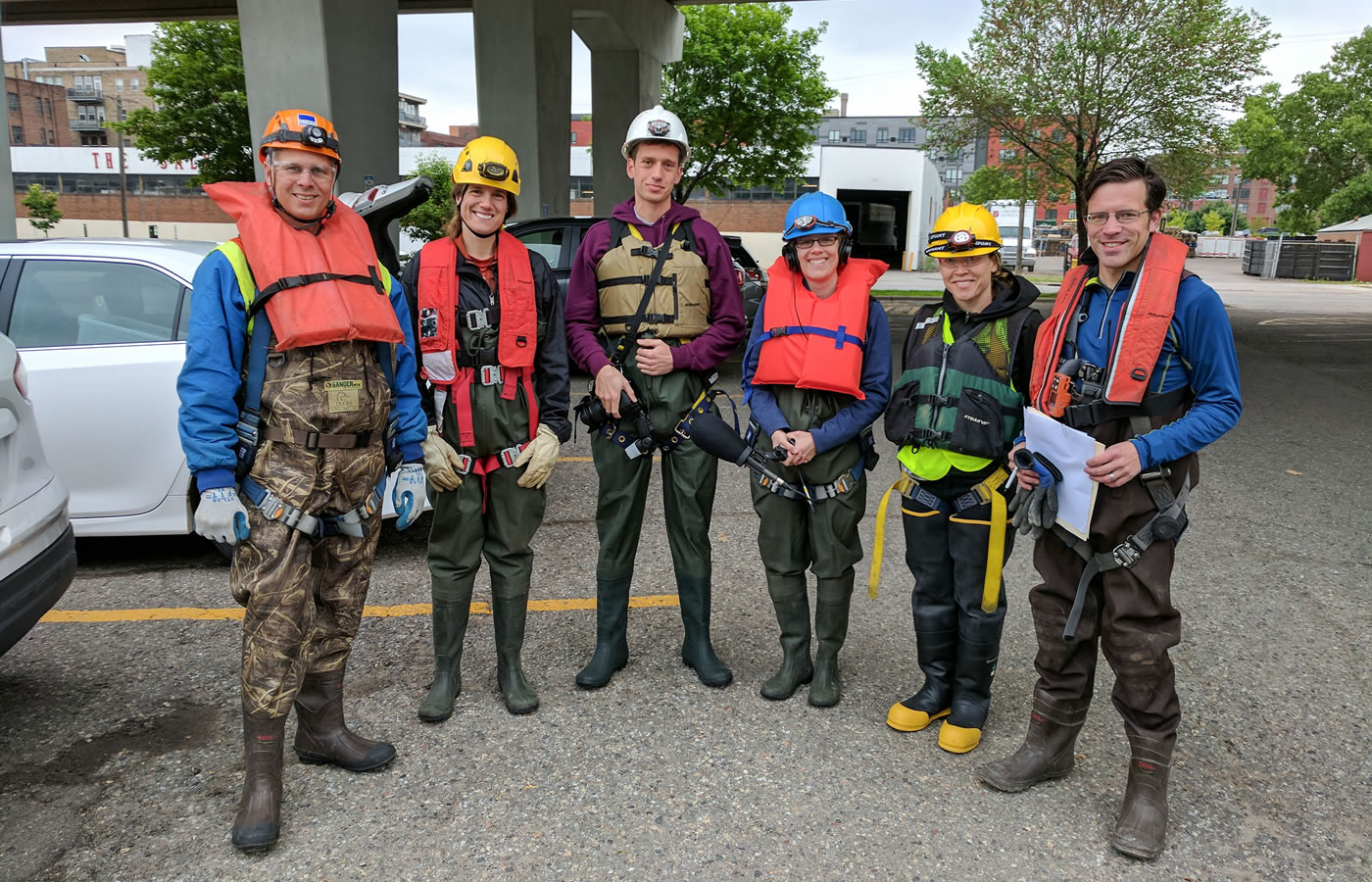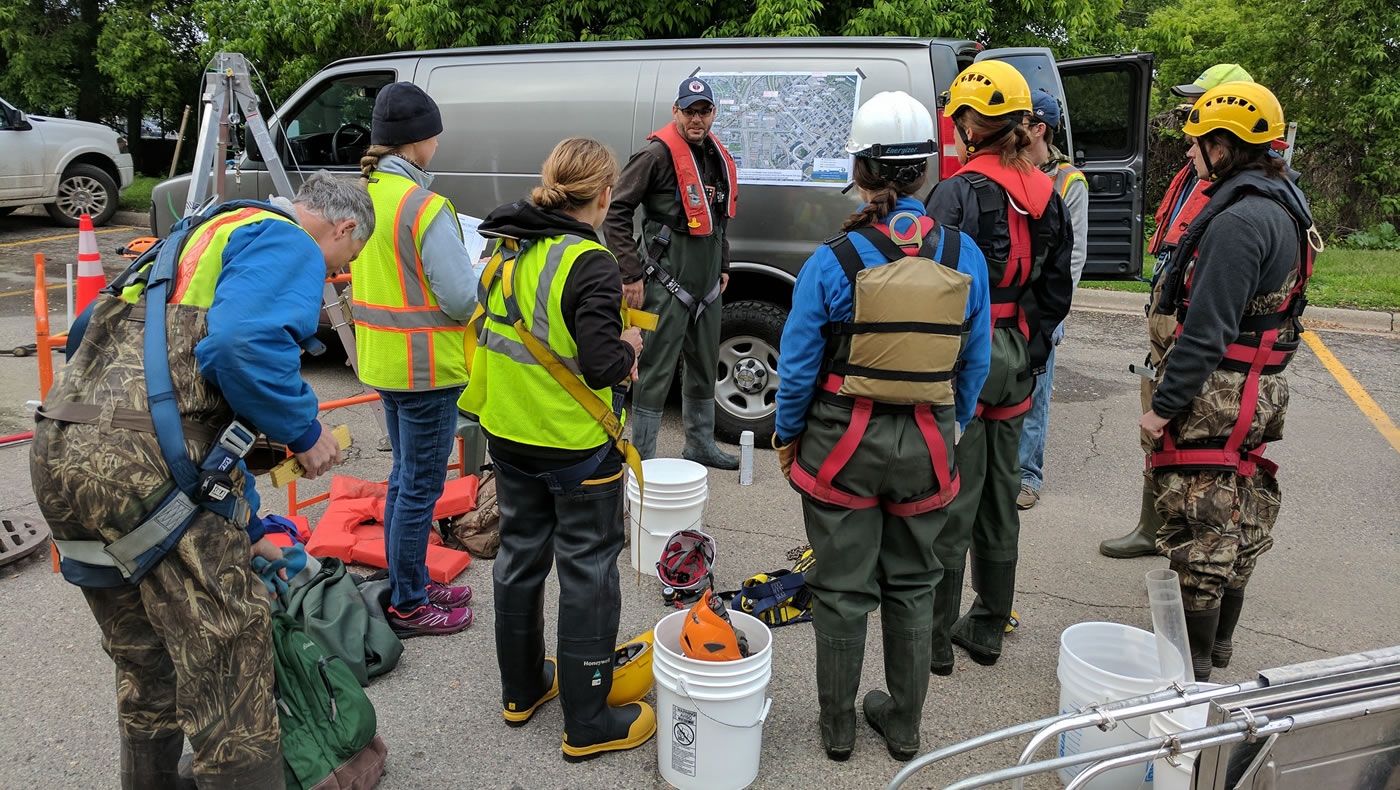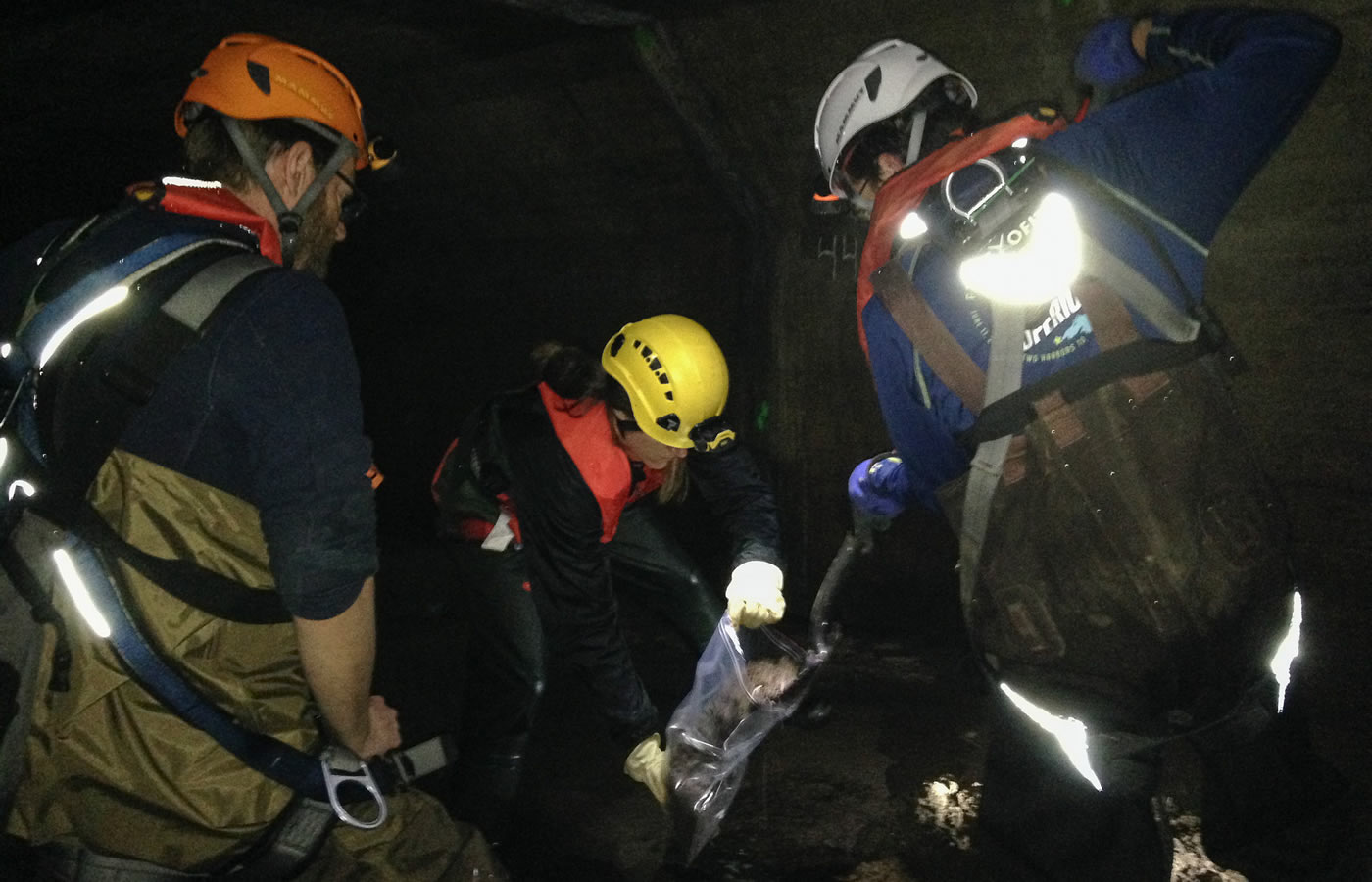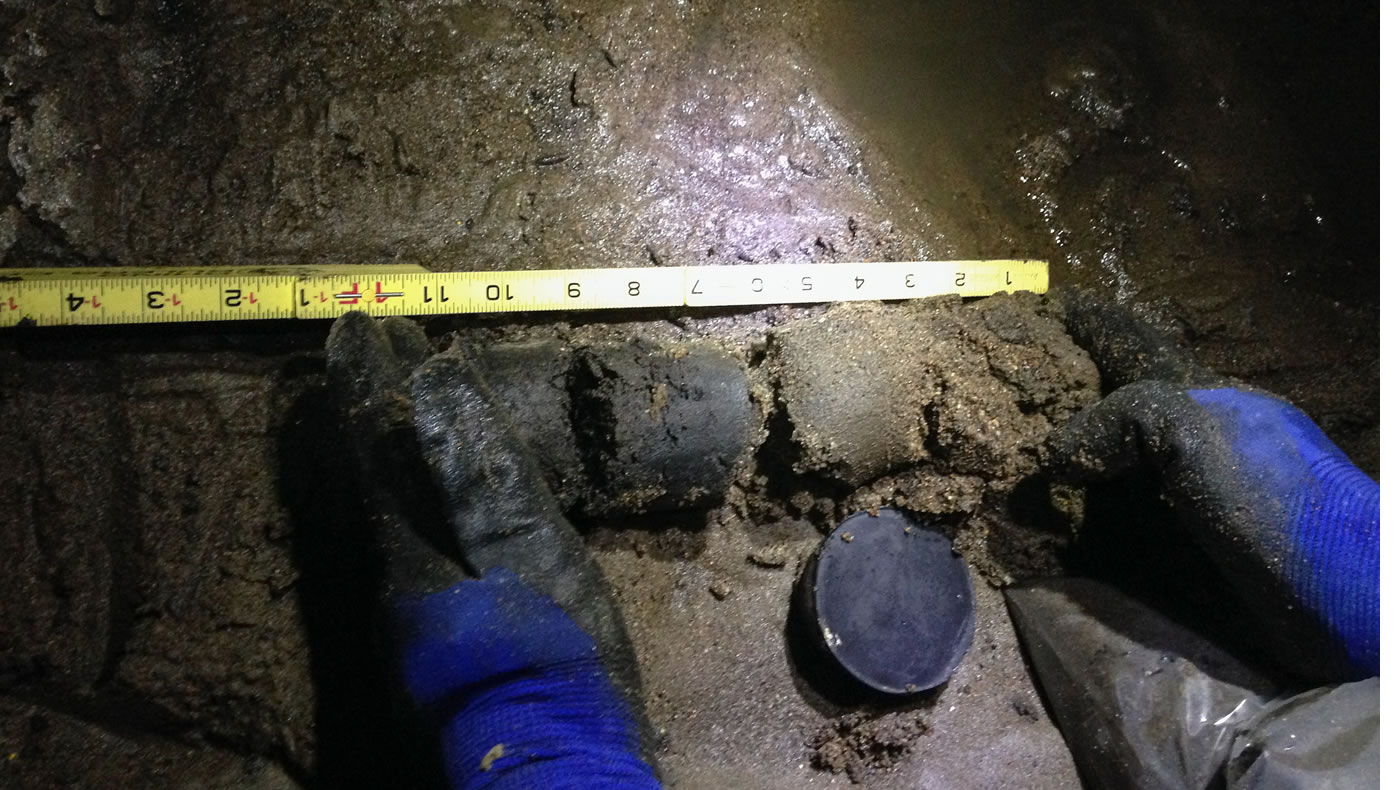News / August 02, 2017
Uncovering the Condition of the Old Bassett Creek Tunnel


Beneath the streets of Minneapolis, an old stream bed winds its way through a stormtunnel from Bassett Creek, just west of downtown, all the way to the Mississippi River. Earlier this summer, MWMO staff walked the tunnel — called Old Bassett Creek Tunnel — with a team from Barr Engineering. Our goal was to measure the amount and nature of sediment and debris that’s deposited inside it.
The excursion, captured in a Minnesota Public Radio News story, was part of a larger study by the MWMO and City of Minneapolis. Results from that day showed that more than 4,000 cubic yards of sediment — enough to fill more than 26 semi-trailers — and two tons of algae-causing pollutants currently reside within Old Bassett Creek Tunnel. Other pollutants found within the tunnel include heavy metals, construction debris and cell phone batteries — all things that we’d like to keep out of our river!
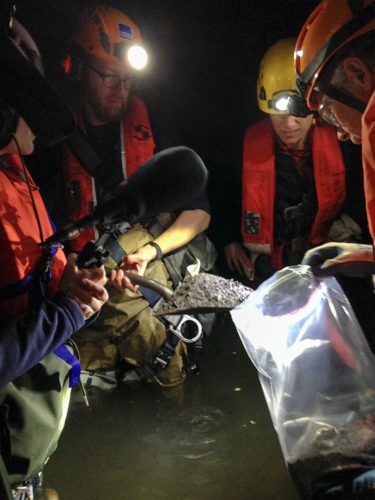
Old Bassett Creek Tunnel is a complex piece of infrastructure with an interesting history. The area where the tunnel is located is the historic Bassett Creek. During the late 1910s, the City of Minneapolis decided to encapsulate the creek and bury it underground in a tunnel. Encapsulating streams was a common occurrence during those times, with numerous natural waterbodies across the country being buried in pipes as the cities developed over the top of them. Completed in 1923, Old Bassett Creek Tunnel runs for 1.5 miles, transporting stormwater runoff (and pollutants) from 870-acres of North Minneapolis into the Mississippi River.
The Old Bassett Creek Tunnel is owned by the City of Minneapolis and administered, in part, by the MWMO. The purpose of the current study is to better understand the tunnel’s structural condition, characterize the amount and nature of sediment and debris that’s deposited within it, and come up with solutions to remove the material before it washes out into the Mississippi River. Results of the study will inform future capital project planning for both the MWMO and City of Minneapolis. The city will use the information to plan for necessary tunnel repairs and the MWMO will use it to look for opportunities to prevent pollutants from getting into the River.
With results of the study now coming in, we’re moving into discussions of next steps. MWMO hopes to partner with the City, starting in 2018, to hire contractors to get into the tunnel and begin the work of cleaning it out. The process will require a lot of hard, dirty-work. Crews will use small construction equipment, or sometimes just shovels, and move throughout the tunnel scooping up the sediment and debris. The material will be moved to a location where it can be removed, using buckets and other special equipment, to lift it out of the tunnel and back up the surface.
This project is a great example of our partnership with the City of Minneapolis and how difficult water management problems get easier when we work hand-in-hand with our partners to develop mutually beneficial solutions.
